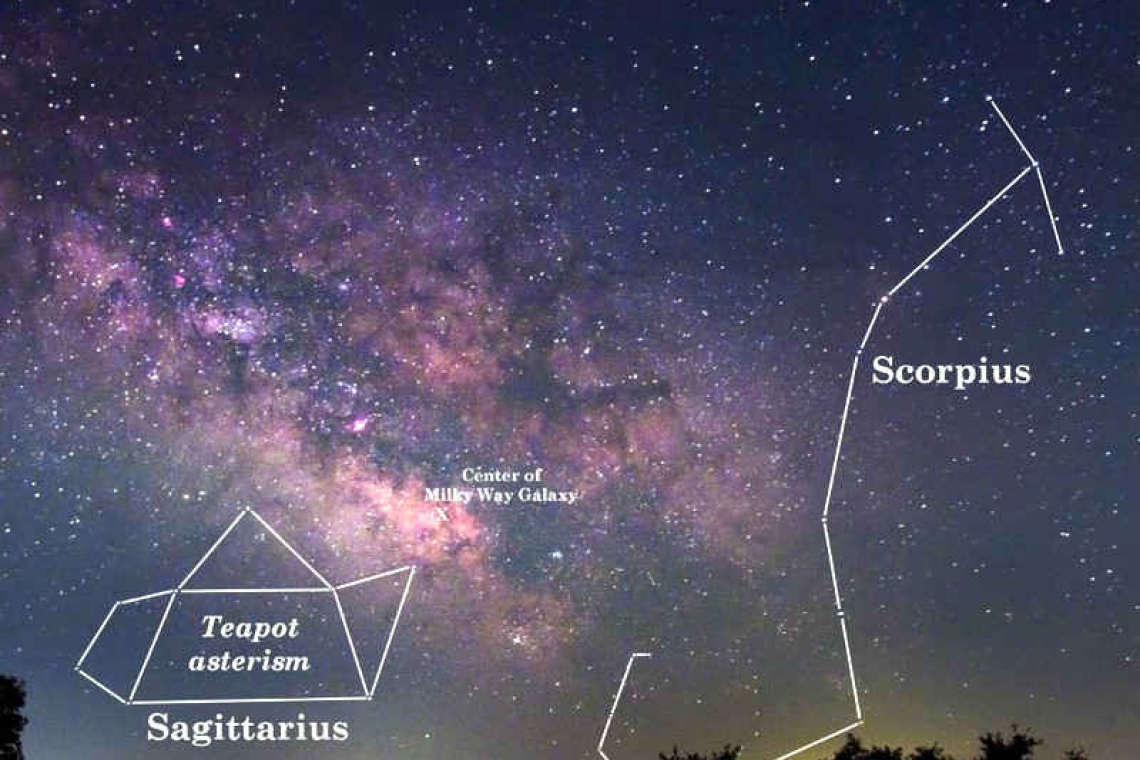~ St. Maarten’s Backyard Astronomy for September 15 - 17 ~
Sun rises at 6:00am
Sun sets at 6:13pm
Lunar phase: New Moon, virtually absent
Moon rises at 7:09am
Moon sets at 7:18pm
This weekend, the stars take centre stage, as we will have no moonlight to compete with the tiny twinkling points of distant worlds. Each star is a sun like ours – some bigger, some smaller – but each a bright, burning sphere of hydrogen and helium. Around some stars, planets orbit – like our sun and its solar system. Among the stars, look for our neighbours, the planets we studied in school: Venus, Mars, Jupiter and Saturn. These planets are easily mistaken for stars, but an old adage reminds us that “planets shine, while stars twinkle”.
If you love star-gazing, this is your weekend, so find a dark spot, such as a remote beach or hillside, away from the artificial lights of buildings, advertising displays and vehicles. There in the darkness, the stars command your full attention. For the evening hours, from about 7:00pm to 11:00pm, look southward to see the constellations Scorpius, Sagittarius and Capricornus.
Starting with the westernmost of these three-star patterns, Scorpius is noticeable by its curved tail aimed eastward and a three-pronged claw pointed west. Where the prongs join is the bright star Antares, a reddish star often confused with the planet Mars. Just behind the scorpion, look for the Centaur, Sagittarius. We love this constellation because once you see it as a teapot shape, you can’t un-see it! Just under the teapot lies a lovely circlet of tiny bright stars: the Corona Australis, or Southern Crown.
Continuing eastward in the low southern sky, the next constellation is Capricornus. This one can be easy to miss, but using the star-hop method, from Scorpius to Sagittarius, just hop once more and you land on the Sea Goat, Capricorn. Another star-hop lands us on Aquarius, famed in songs from the 60s. This weekend, you’ll find the planet Saturn sitting right in the belly of The Water Bearer, that’s a heck of a belly-button ring! Get out your binoculars and focus in to see Saturn’s beautiful rings and some of her many moons.
Reaching up from the southern horizon, through the constellations of Scorpius and Sagittarius, you may even see the Milky Way Galaxy, of which we are a member. Earth and the Solar System we call home are a miniscule part of this massive swirl of stars, gas, dust and unknown mysteries. Within this amazing celestial structure lie what astronomers call deep sky objects: nebulas and clusters labelled and catalogued but barely understood.
And by the way, looking south this weekend, you may glimpse several satellites traveling from overhead to the southern horizon, most of which are the Starlink satellites in the communications network that help our global society run at lightning speed. They tend to follow each other in a vertical line, so keep an eye out for those as well. And enjoy your star-gazing night under a dark, moonless sky.
Thank you for keeping up with the Night Sky articles, backyard astronomy designed for St. Maarten sky viewing. FYI: If you are out later on in the week, note that each star rises about four minutes earlier each day than written here, and the moon rises 50 minutes later. Night Sky is researched and compiled by Lisa Davis-Burnett. Earthsky.org is a key resource for information and images. Questions or comments? Email This email address is being protected from spambots. You need JavaScript enabled to view it.







